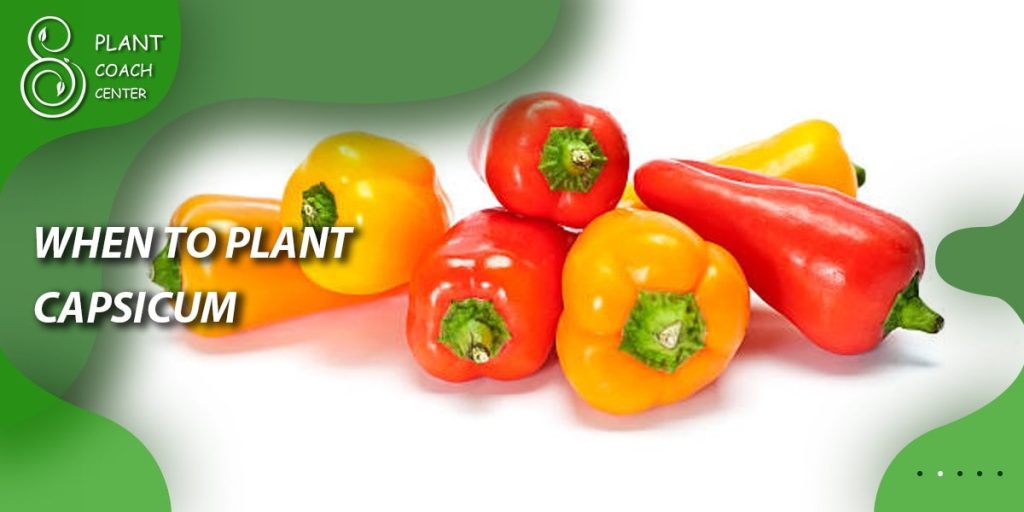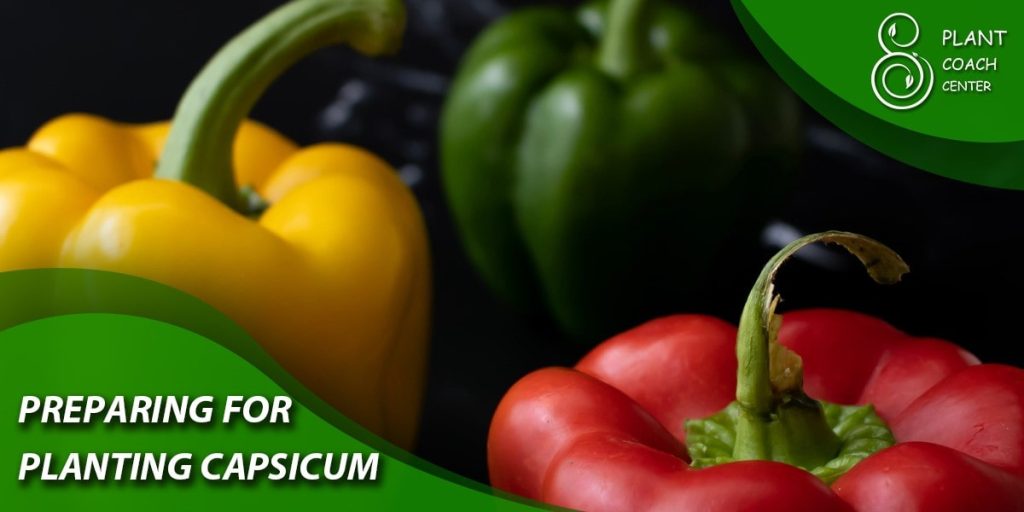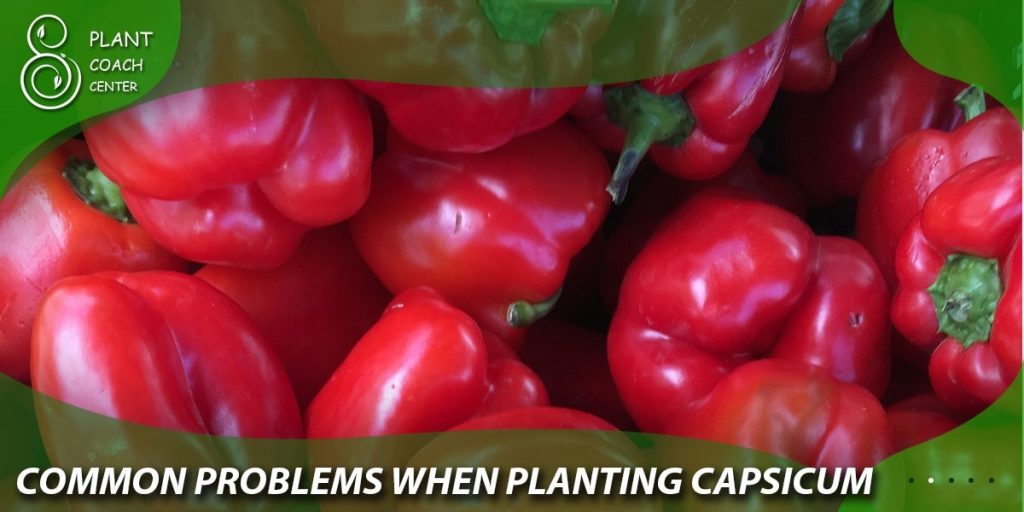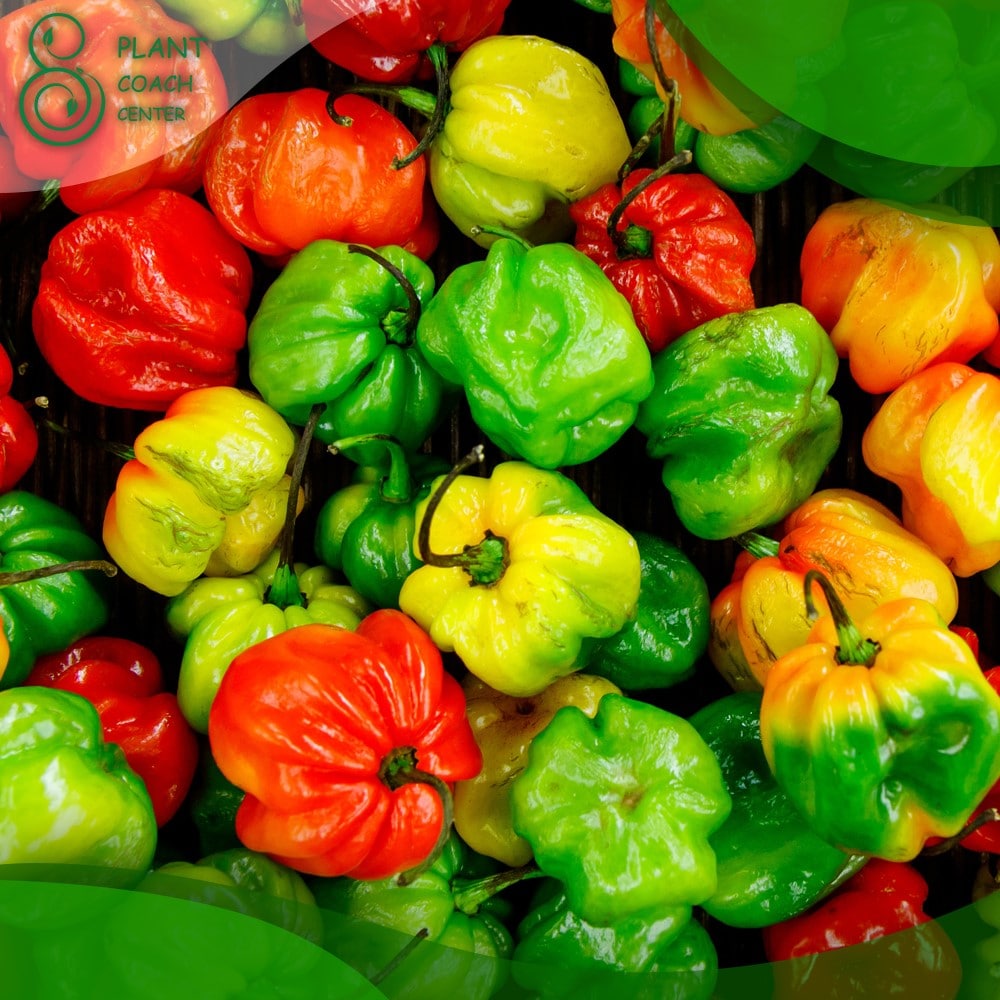When to Plant Capsicum
Introduction
Capsicum, commonly known as bell pepper or chili pepper, is a popular vegetable that is used in various cuisines around the world. It is a rich source of vitamins and minerals, making it an essential part of a healthy diet. However, planting and growing capsicum can be a challenging task, especially for beginners.
That’s where plant coaching comes in. In this article, we will discuss the best practices for planting capsicum and the importance of plant coaching. This article is related to Plant Coach Center, the premier online resource for plant coaching.

Understanding Capsicum
Capsicum is a member of the Solanaceae family, which includes other popular vegetables like potatoes, tomatoes, and eggplants. There are several types of capsicum, including sweet bell peppers, hot chili peppers, and ornamental peppers. Capsicum plants are typically small bushes that grow up to 2-3 feet tall and produce fruits that vary in size and color.
Capsicum is a nutrient-dense vegetable that is rich in vitamins A, C, and K, as well as potassium and fiber. It is also low in calories, making it an ideal food for weight management. Capsicum has several health benefits, including improving heart health, boosting immunity, and reducing inflammation.
Factors to Consider When Planting Capsicum
To grow healthy capsicum plants, several factors must be considered, including:
– Climate: Capsicum plants require warm temperatures and plenty of sunlight to thrive. They can be grown in most climates, but they do best in warm, sunny areas with long growing seasons.
– Soil Type and Quality: Capsicum plants require well-draining soil that is rich in nutrients. The soil should be slightly acidic with a pH of 6.0-6.8.
– Sunlight Requirement: Capsicum plants require at least 6-8 hours of direct sunlight per day to grow and produce fruit.
– Watering and Drainage: Capsicum plants require regular watering, but they do not tolerate waterlogged soil. Proper drainage is essential to prevent root rot and other water-related problems.
– Fertilization: Capsicum plants require regular fertilization to thrive. A balanced fertilizer with a ratio of 10-10-10 is ideal for capsicum plants.

Preparing for Planting Capsicum
Before planting capsicum, several steps must be taken to ensure success, including:
– Seed Selection: Choose high-quality seeds from a reputable supplier. Look for seeds that are labeled as disease-resistant and suitable for your climate.
– Seed Treatment: Soak the seeds in water for 24 hours before planting to improve germination rates.
– Seed Sowing: Sow the seeds in seed trays or small pots filled with well-draining potting soil. Plant the seeds at a depth of ¼ inch and keep the soil moist.
– Seedlings Care: Once the seeds have germinated, keep the seedlings in a warm, sunny location and water them regularly. When the seedlings are about 3-4 inches tall, transplant them into larger pots or directly into the garden.
When to Plant Capsicum
Timing is crucial when planting capsicum. Capsicum plants require warm temperatures to grow and produce fruit, so they should be planted after the last frost in your area. In most areas, this will be in late spring or early summer. The ideal soil temperature for planting capsicum is between 60-70°F. Here are some tips for planting capsicum:
– Timing: Plant capsicum after the last frost in your area, typically in late spring or early summer.
– Temperature Requirements: Capsicum plants require warm temperatures to grow and produce fruit. The ideal soil temperature for planting capsicum is between 60-70°F.
– Soil Preparation: Prepare the soil by adding compost or well-rotted manure to improve soil quality and nutrient content.
– Planting Techniques: Plant capsicum 18-24 inches apart in rows that are 24-36 inches apart. Plant the seedlings at the same depth as they were in their pots.

Common Problems When Planting Capsicum
Capsicum plants are susceptible to several problems, including pests, diseases, and environmental factors. Here are some common problems and their solutions:
– Pests and Diseases: Capsicum plants are susceptible to pests like aphids, spider mites, and whiteflies, as well as diseases like powdery mildew and bacterial spot. To prevent these problems, use insecticidal soap and fungicides as needed and practice good sanitation.
– Environmental Factors: Capsicum plants are sensitive to temperature fluctuations, drought, and excessive moisture. To prevent these problems, provide proper irrigation, mulch the plants, and protect them from extreme temperatures.
Nutrient Deficiencies: Capsicum plants require several nutrients to grow and produce fruit, including nitrogen, phosphorus, and potassium. To prevent nutrient deficiencies, use a balanced fertilizer and amend the soil with compost or other organic matter.
Plant Coaching for Capsicum
Plant coaching is a valuable tool for anyone who wants to grow healthy capsicum plants. Plant coaching involves working with aprofessional plant coach who can provide guidance and advice on all aspects of plant care, from seed selection to harvest. Here are some benefits of plant coaching for capsicum:
– Improved Plant Health: Plant coaching can help you identify and address problems with your capsicum plants before they become serious. A plant coach can provide guidance on soil preparation, watering, fertilization, and pest and disease management.
– Increased Yield: By following plant coaching advice, you can increase the yield of your capsicum plants. Proper fertilization, watering, and pruning techniques can all help to maximize your harvest.
– Cost Savings: Plant coaching can help you save money by preventing problems with your capsicum plants before they become serious. By using the right techniques and products, you can avoid costly mistakes and minimize waste.

Plant Coaching Techniques for Capsicum
Here are some plant coaching techniques that can help you grow healthy capsicum plants:
– Soil Preparation Techniques: Amend the soil with compost or other organic matter to improve soil quality and nutrient content. Test the soil pH and adjust as needed.
– Watering Techniques: Water capsicum plants deeply and regularly, but avoid overwatering. Use a drip irrigation system or soaker hose to deliver water directly to the roots.
– Fertilization Techniques: Use a balanced fertilizer with a ratio of 10-10-10, or a fertilizer that is formulated specifically for capsicum plants. Apply fertilizer every 4-6 weeks during the growing season.
– Pest and Disease Management Techniques: Use insecticidal soap and fungicides as needed to prevent pests and diseases. Practice good sanitation by removing dead plant material and cleaning up fallen leaves and debris.
Conclusion
Capsicum is a nutritious and delicious vegetable that can be enjoyed in a variety of dishes. However, planting and growing capsicum can be a challenging task, especially for beginners. By following the tips and techniques outlined in this article, you can grow healthy capsicum plants and enjoy a bountiful harvest.
Remember, plant coaching is a valuable tool that can help you achieve gardening success. Visit Plant Coach Center for more information on plant coaching and other gardening resources.
When should I plant capsicum?
Spring.
What is the best time for capsicum planting?
Late spring or early summer.
Can I plant capsicum in winter?
No. Capsicum should not be planted in winter.
When should I avoid planting capsicum?
Avoid planting capsicum during frosty or cold weather conditions.







